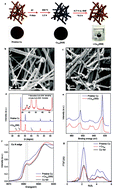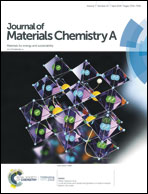Syngas production from electrocatalytic CO2 reduction with high energetic efficiency and current density†
Abstract
The direct conversion of CO2 to syngas with controllable composition remains an intense interest for the production of renewable fuels. Large current density and high cell voltage efficiency are critical from a practical viewpoint for electrochemical CO2 reduction reaction (CRR), while the design of catalysts is a great challenge. Here, we report oxide-derived Cu nanowires with abundant, highly dispersed two-phase CuO heterostructures for syngas generation. The specified H2/CO ratios of 1, 2 and 3, with extra high CRR faradic (90%) and energetic (50%) efficiencies, were achieved. Density functional theory calculations reveal that the misfit dislocation sites in the electrocatalyst break the inherent scaling relationship of CRR intermediates' adsorption energies with an extraordinarily strong adsorption of *COOH and consequently promote excellent activity of the catalyst toward CRR. Driven by a commercial solar cell (working voltage of 2.2 V) under direct sunlight, the freestanding electrocatalyst can steadily generate syngas of the desired composition using CO2 as a feedstock.



 Please wait while we load your content...
Please wait while we load your content...